Turning your house into a home is one of the most rewarding projects you can take on. It’s not just about picking out pretty things but creating a space that makes you feel relaxed, inspired, and truly at home. Whether you’re just getting started or looking to refresh your current decor, there are a few key ideas to keep in mind that will help you design a stylish and functional space.
8 Steps to Decorate Your Home
- Explore which furnishing styles you prefer in a home.
- Set practical limits for your budget and decorating timeline.
- Choose colors that appeal to you and work well with your chosen style.
- Pick a focal point for each room to help guide your design.
- Arrange furniture to create a cohesive flow through each room.
- Layer your lighting to create the right mood and functionality.
- Select decor items that fit the theme and color palette to fill out each room
- Invest in timeless pieces that will last and can be updated to reflect different styles.
1. Define Your Style
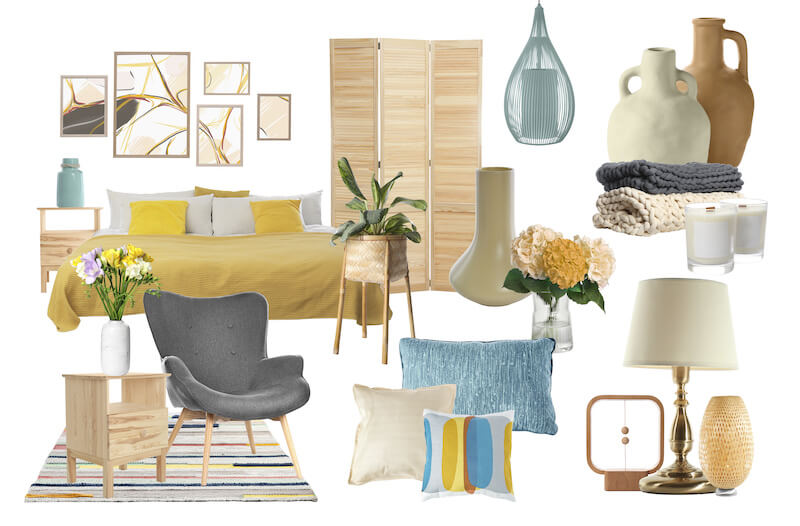
Before you start buying new furniture or painting walls, take a moment to think about your style. What makes you feel comfortable and inspired? A great way to explore your preferences is by creating a mood board digitally on Pinterest or with old magazines. Collect images, colors, and designs that resonate with you.
If you aren’t starting from scratch, pick your favorite pieces you already own and extrapolate. For example, picture your living room sofa as the centerpiece, then build the rest of the space around it, choosing pieces that complement its style. Or choose a piece of wall art you like and imagine the type of room it might go in. If you find multiple pieces you like sold by the same designer or company, look at what else they have.
Explore different design styles, too—whether you’re drawn to modern, farmhouse, or minimalist aesthetics. Whatever you choose, it should be cohesive throughout the house. For example, having an elegant, traditional dining room might cause a jarring clash with a sleek, minimalist kitchen.
2. Set a Budget and Timeline
Now that you have a vision, it’s time to get practical. Setting a budget and timeline is key to ensuring your ideas don’t spiral out of control. Start by thinking about the scope of your project—how much room do you need to decorate, what upgrades do you want to make, and will you need professional help? For example, decluttering services average around $522, so factor that in if it’s part of your plan.
To stay within budget, consider DIY projects or reusing furniture or decor items you already own. This helps you prioritize spending on essential updates like fresh paint, new light fixtures, or key furniture pieces. Stay flexible and monitor your expenses to ensure you’re not over your budget.
A clear timeline will also help you stay on track and avoid burnout. Break down the project into manageable milestones and keep track of your progress.
3. Choose Your Color Palette
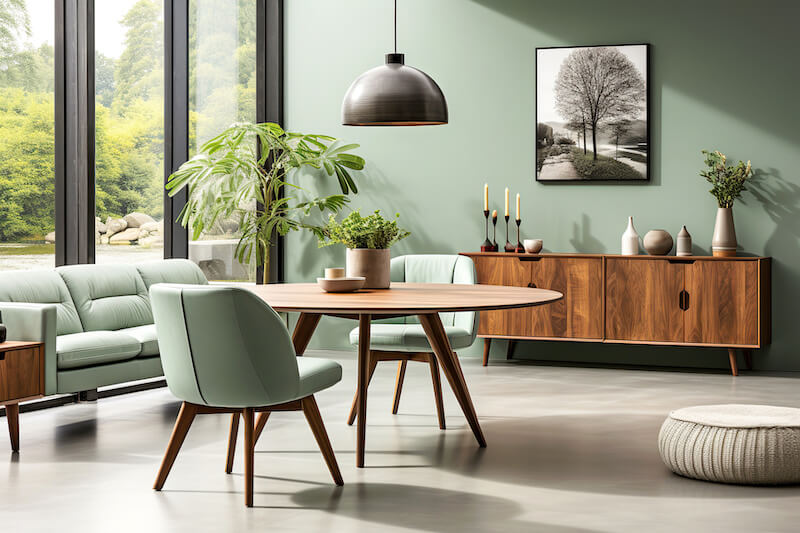
Color has a huge impact on your home’s mood, so choosing the right palette is one of the most important decisions you’ll make. Think about how different colors make you feel—calm, energized, cozy—and how they’ll work with the size and natural light of each room.
Not everything has to be matchy-matchy, but you can explore color theory and formal color schemes to find colors that go together well. Experiment with different shades of the same color, warm and cool variants of neutrals like gray and brown, and pops of accent colors.
If you want a sense of flow throughout your house, pick an interior design palette that can carry through multiple rooms. Refreshing old furniture with new paint or upholstery in fitting colors is an easy way to tie everything together without buying all new pieces. Choosing a multicolored piece, like wall art or a patterned rug, to tie disparate pieces together is a great way to unify a space.
Above all, embrace color as a tool to create a space that feels uniquely you.
4. Choose a Focal Point for Each Room
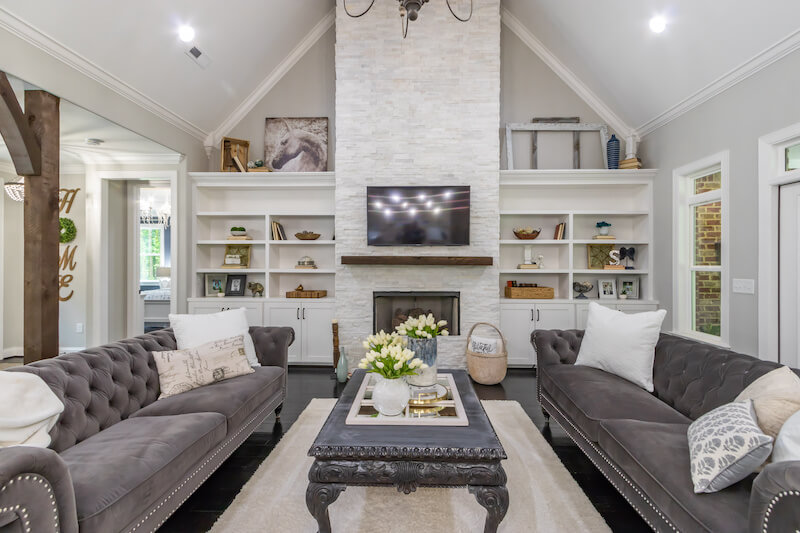
A well-designed room often has one key element that draws the eye and ties everything together. Whether it’s a fireplace, a large wall, or an eye-catching piece of art, creating a focal point will help guide your design decisions and anchor your room.
For example, a large window with intricate trim could be the natural focal point of a cozy reading nook. In a living room, you might center the sofa around a fireplace or hang artwork in an eye-drawing location. By arranging your furniture around this central element, you’ll create a harmonious and inviting space.
5. Plan Your Layout
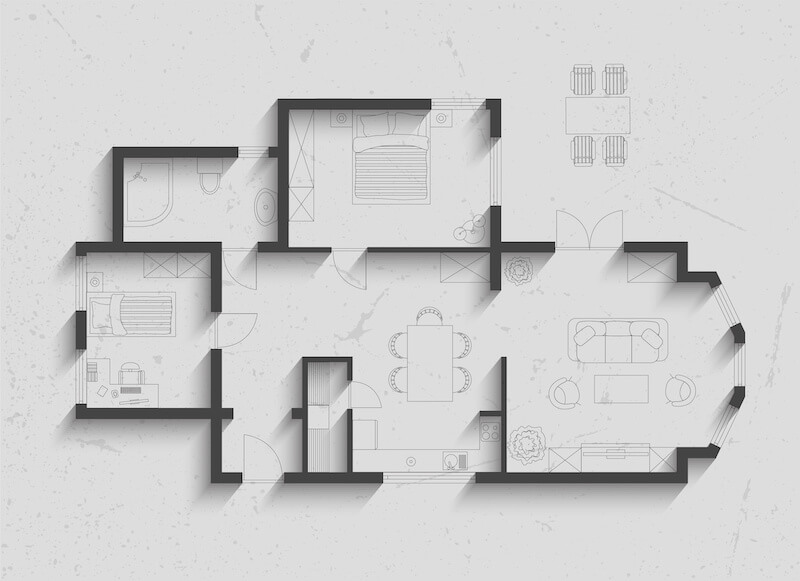
Once you’ve chosen your focal points, it’s time to think about how to arrange your furniture. Good furniture placement helps maximize space and promotes easy movement. Before you start physically moving things around, try using design software to experiment with different layouts—or even just graph paper and a pen. It can help you visualize how changes will impact the flow and feel of the room.
Also, consider each space’s function. For example, create seating arrangements in a living room that encourage conversation and relaxation. Make sure there’s plenty of space for people to move around without feeling cramped, but you’ll also want to make sure everyone has a good view of the TV wall or whatever else you want the focus of the room to be.
Start by placing the biggest pieces of furniture first—sofa, bookshelves, or armchairs—then arrange smaller items around them. And don’t forget about picking out rugs! A large rug can help define your seating area and add texture to the room.
6. Layer Your Lighting
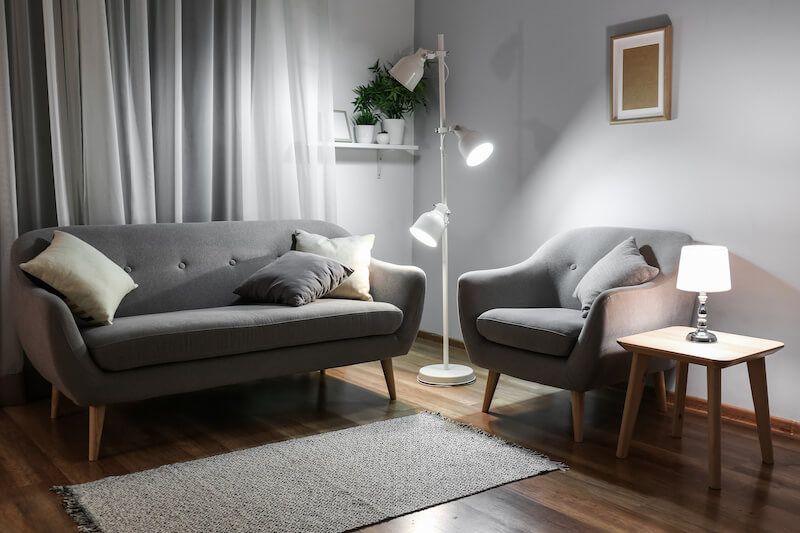
Lighting is an often-overlooked detail that can make a huge difference in a room’s mood and functionality. Rather than relying on one overhead light, layer different types of lighting to create depth and atmosphere.
- Ambient lighting provides general illumination (think overhead fixtures or recessed lights).
- Task lighting helps with specific activities, like reading or cooking, and can include desk lamps or pendant lights.
- Accent lighting adds a decorative touch by highlighting artwork, plants, or architectural features.
Experiment with dimmer switches to control light intensity and set the mood in different rooms. Proper lighting not only makes your home functional but also enhances the style and ambiance of your space.
7. Add Personality with Decor
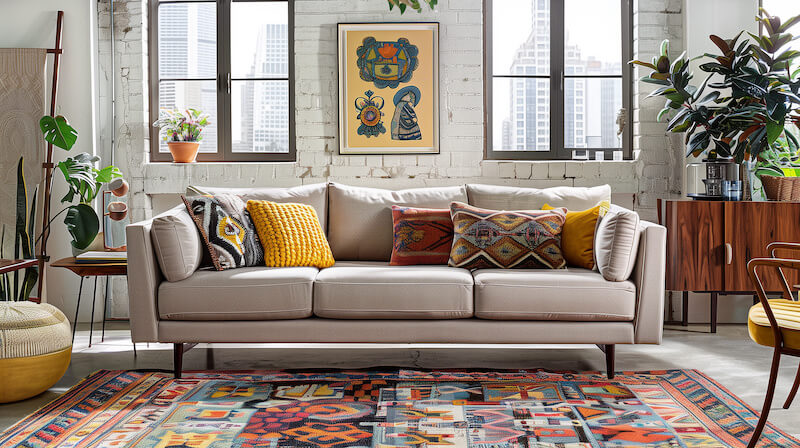
Once your layout and lighting are in place, it’s time to make the space your own with decor. This is where you can most easily show off your personality. Whether through unique artwork, vintage finds, or family heirlooms, these personal touches will help tell the story of who you are.
Mixing textures, patterns, and colors is a great way to make a room more dynamic and visually engaging. Create focal points with statement pieces, like a bold armchair, a striking rug, or a gallery wall showcasing artwork or your favorite photos.
Remember to add some greenery! Plants are an easy way to introduce color and texture and help create a calming, natural atmosphere.
8. Plan for Changes Over Time
One of the best things about decorating is that it doesn’t have to be a one-and-done project. As your style evolves, so can your space. Invest in timeless, high-quality furniture that can easily be updated with new hardware or an upholstery swap. Choose pieces that can withstand time, like a classic leather armchair or a sturdy wooden dining table.
Look for versatile furniture that can be rearranged as your needs change, and opt for neutral foundational pieces that will work well with different accent colors. This way, you can keep your home feeling fresh without completely redecorating every time your tastes change.
The Possibilities Are Endless When Decorating Your Home
Decorating your home involves blending creativity, practicality, and personal style. By defining your style, setting a realistic budget, choosing a cohesive color palette, and being mindful of lighting and furniture placement, you can create a space that feels comfortable and uniquely yours.
So, take your time, experiment, and enjoy the process of turning your house into a home that reflects your personality. Happy decorating!




